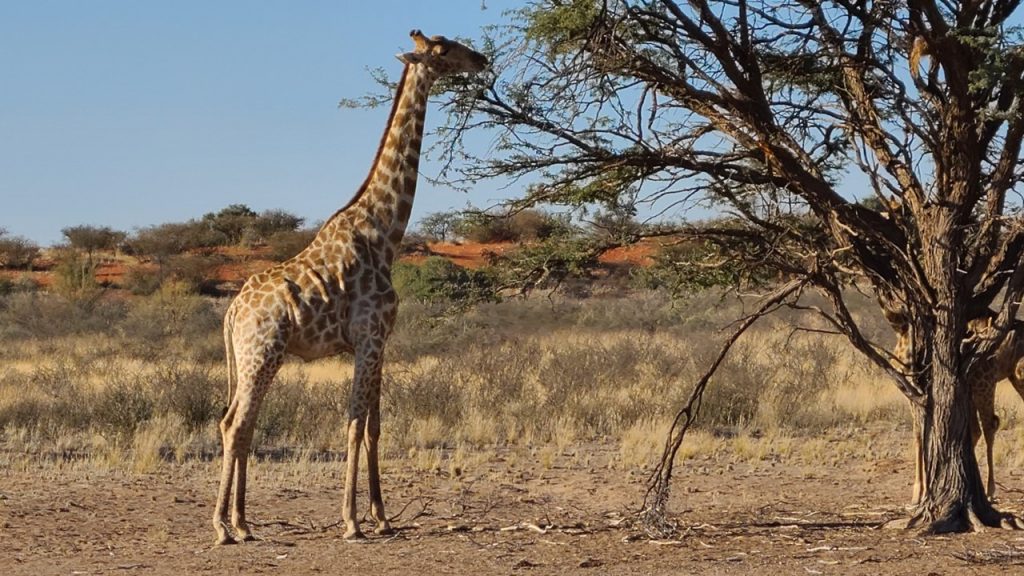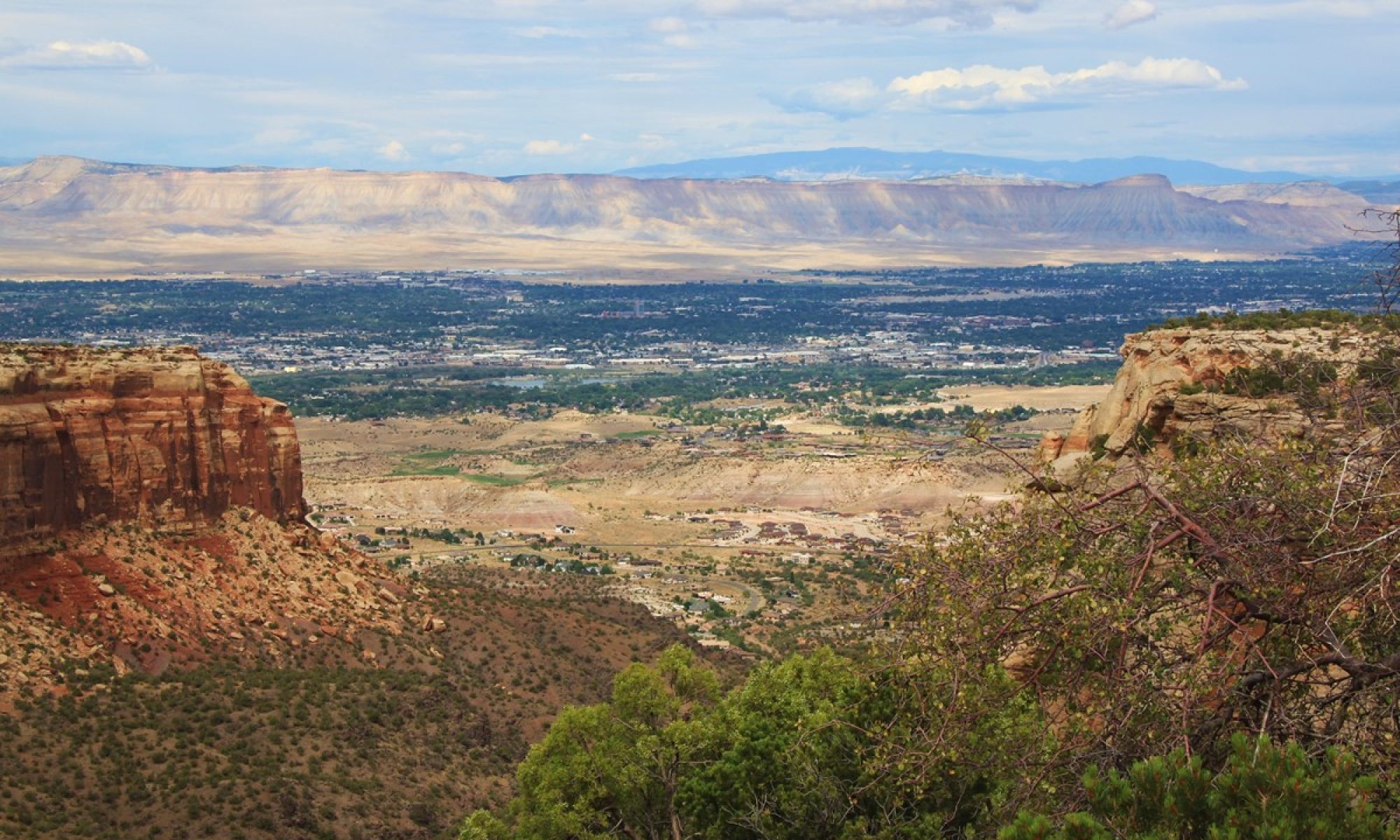Exploring the Winter Deserts
Part 3: The Skeleton Coast
On Sunday, July 9th, we left Swakopmund early and began our trip north along the Skeleton Coast. The first ~250km through the Durob National Park were on relatively good gravel roads. Along the way, there were numerous shipwrecks and salt and diamond mining operations. One large ship, the Zeila, was wrecked on the shore of Henties Bay as recently as in 2008. We saw an old, rusty, derelict oil rig, and many abandoned operations. Halfway along, we officially entered the Skeleton Coast National Park at Ugab River Gate, where, according to the log book, the last road traveler to enter this way had been over a week before! Once we made it to the final town of Torra Bay, the roads deteriorated significantly and we left all vestiges of civilization – no cell phone service, no towns, no homes, no other roads, and no people! Meanwhile, the wind was still fierce, but blowing from the east off of the Atlantic Ocean. The temperature was in the mid 40’s Fahrenheit, and once we passed Terrace Bay (where we filled up with diesel), we never saw another vehicle for the last ~100km. The road is rarely traveled as most people traveling to this region opt to fly-in on small planes. However, today’s weather would have made flying impossible. When we reached the “end of the road”, at Möwe Bay, there was an abandoned gate, a small block-house, and a colony of over 500,000 seals. We parked to await the arrival of our transport to the lodge and used the time to explore the beach. When our guide/driver arrived, we shared drinks and nibbles while making introductions and getting oriented. Before continuing our drive with 4-wheel drive the additional 45 km north to Shipwreck Lodge, we visited the seal colony and were lucky enough to meet and visit with Dr. Philip Stander, an eco-biologist studying the desert lions of the Skeleton Coast. He has been tracking and studying over 80 desert lions for over 20-years using GPS collars and game cameras. By the 1990’s, the Skeleton Coast’s desert lions had almost been eliminated from the area, but they have returned and are re-adapting to the extreme environment, including hunting seals. Dr. Stander let us know that a female had recently returned to the area near the lodge, but the lodge area covers over 145,000 hectares. Dr. Stander then gave us a DVD documentary of the chronology of one of the desert lion prides.
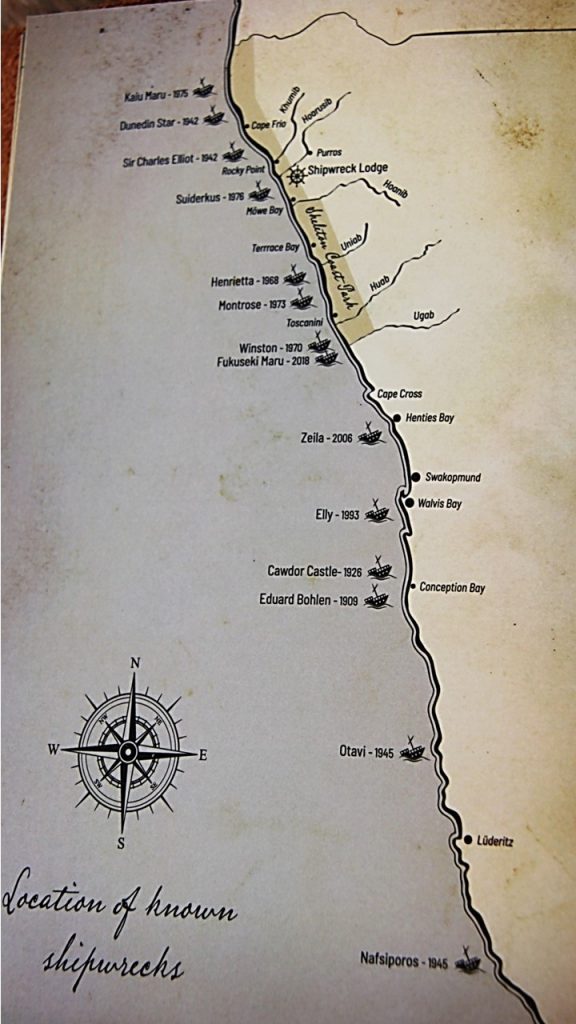
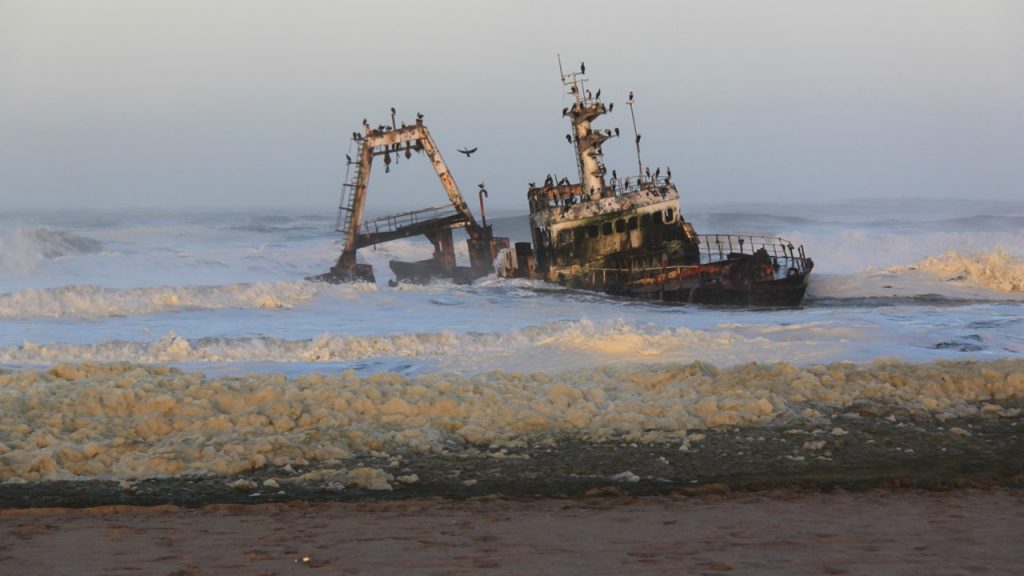

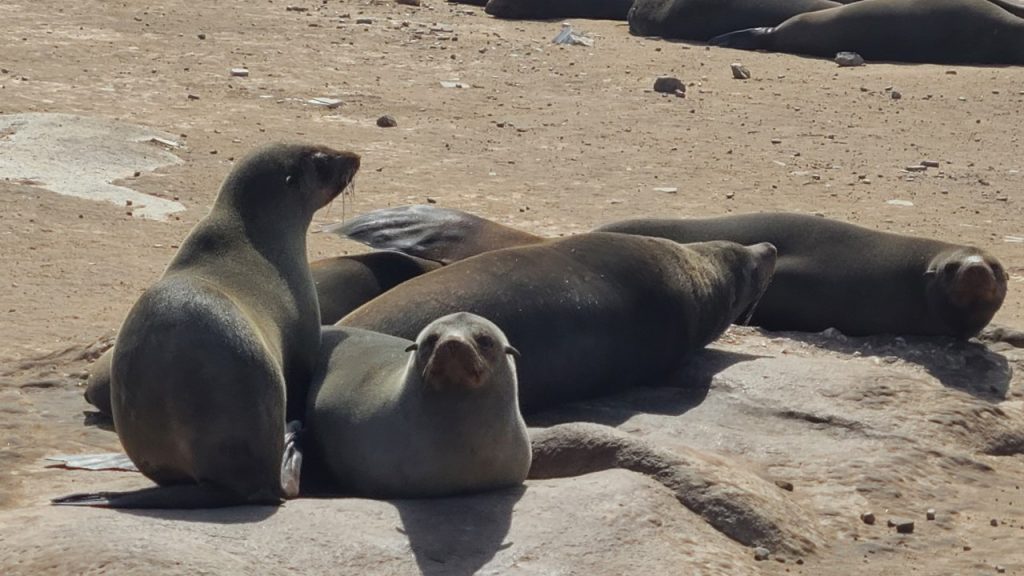
Driving north to Shipwreck Lodge, we encountered numerous whale bones along the beach. It was low tide, so we could navigate partly on the beach and partly on the dunes to get to the lodge. The lodge is located near the mouth of the Hoarusib River and has a 25-year lease with the government, including a clause to eventually return the land as if no lodge was ever there. It opened in 2018, relies completely on solar power with a small backup generator. It is built into sand dunes, and there is no noise pollution. The view is stunning with breathtaking vistas of desert, sky, and ocean for as far as one can see. After arrival and orientation, we settled in our room and then did a sundowner drive to the beach for drinks. This area of the beach had lots of drift wood and high winds that were now coming from out of the south with 24-foot waves. Because of the high winds and salt mist and sand in the air, the sunset was unusual. We actually had to back the vehicle off the sand ridge as the tides were coming in and almost washed away our drink table. That evening, we had a lovely oryx steak and fish dinner and a great conversation with the other 12 guest that were there. Later that night, we returned to our room where a fire had been lit for us in our cast iron stove, warming the room.
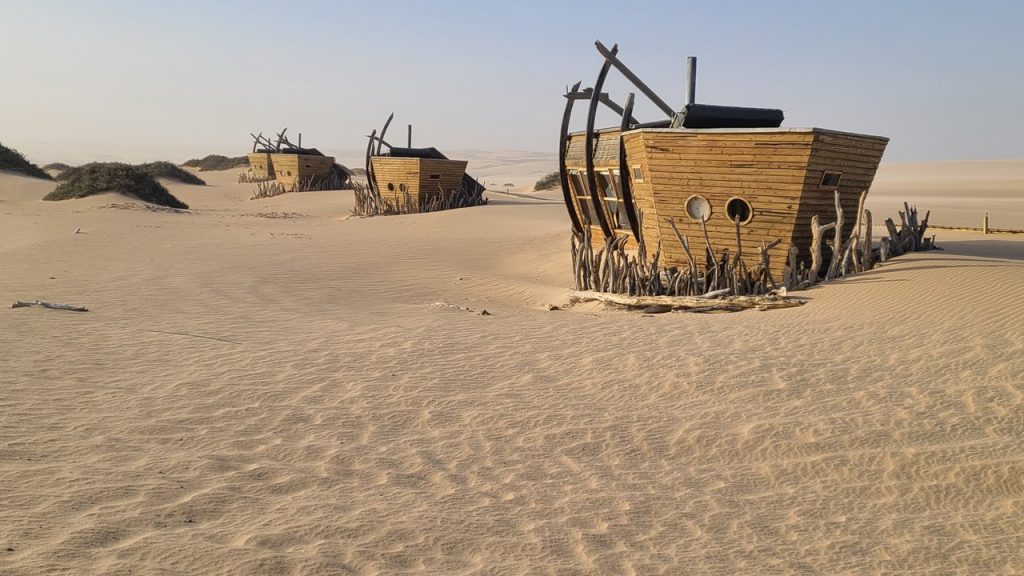
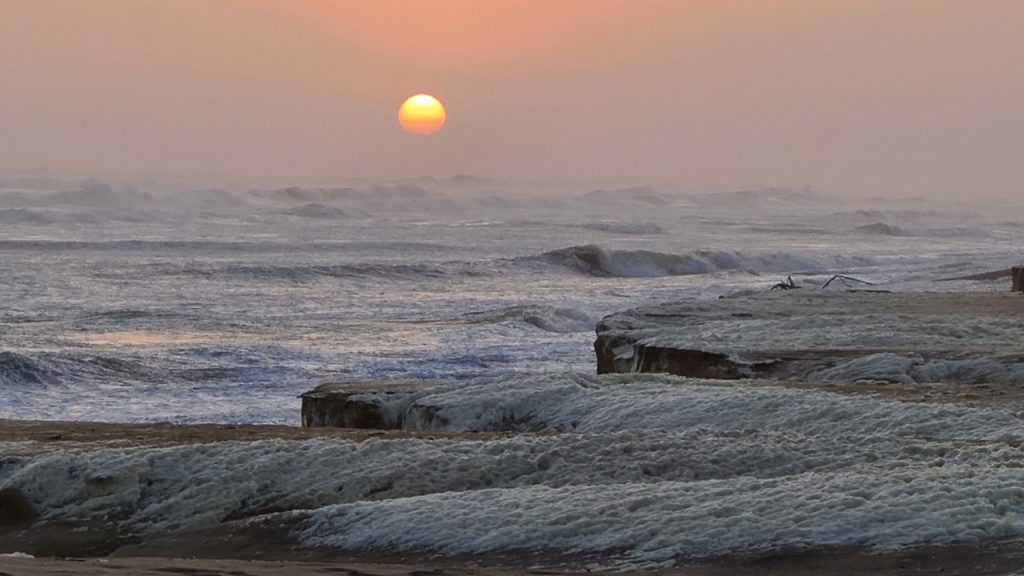
Monday morning, we were up for coffee and a leisurely breakfast. The weather had improved significantly as the front had passed and the wind had died. However, some of the camp’s raised wooden walkways had become buried by the night’s moving sands and, reminiscent of analog snowstorms in the northern USA, staff were busy shoveling them out. After breakfast, we met our guide for riding 4×4’s over the sand dunes, exploring the area, and looking for signs of local animals. We were out among the dunes for about 2-hours – spotting oryx and springboks, finding hyena tracks, and trekking across an other-worldly landscape more akin to the moon or a distant planet. We even learned to “walk” our 4×4’s down the steepest face of the dunes, surfing downhill on a controlled landslide.
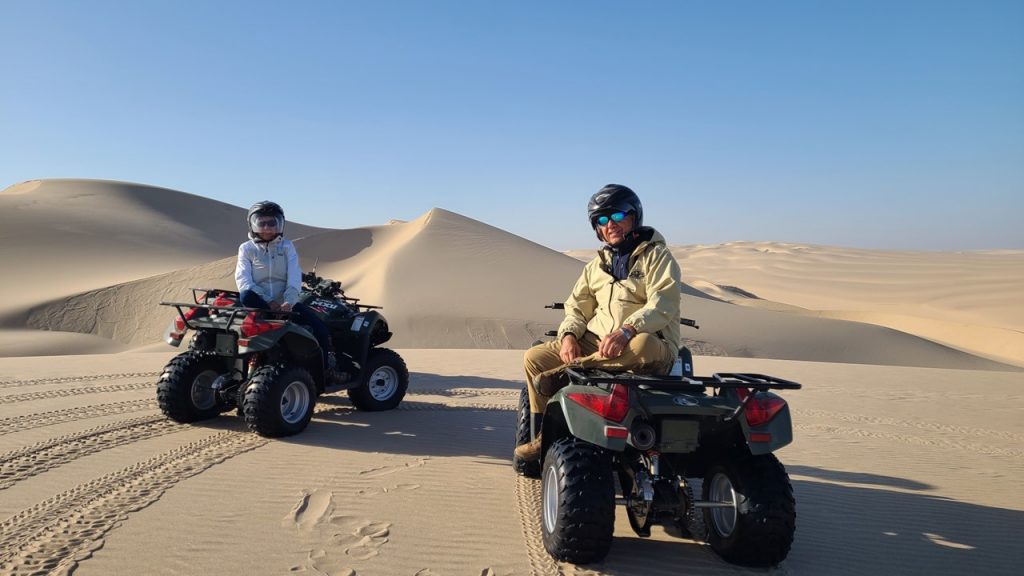
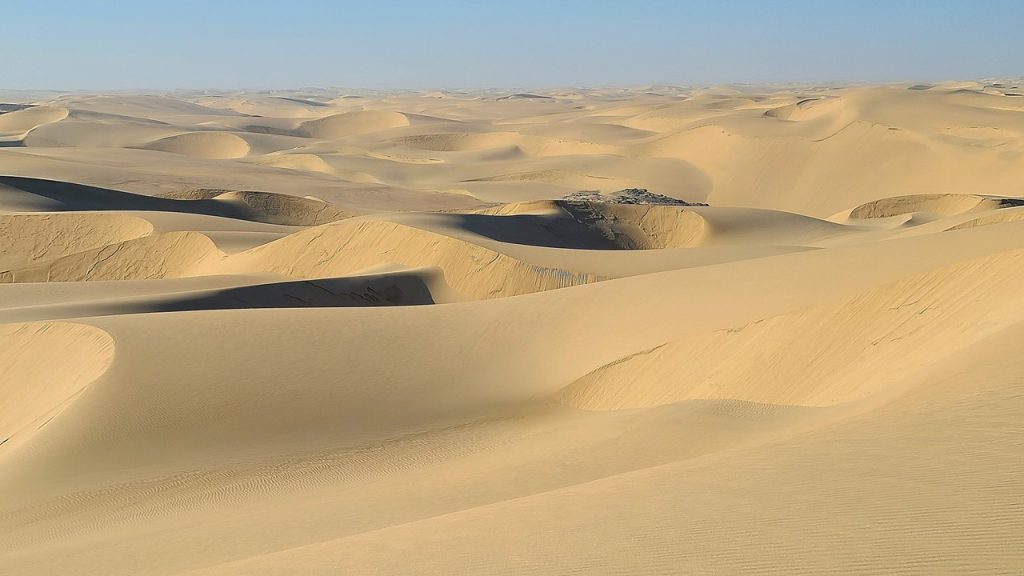
After returning to the lodge for a hot tea, we decided to take advantage of the good weather and embarked on a ~1-mile, one-way, self-hike from the lodge to the ocean over a series of small dunes. Along the way, we saw springboks, picked up a jaw bone of a zebra, and unsuccessfully looked for diamonds on the beach. There were lots of animal tracks on the dunes (brown hyaena, oryx, springbok, jackal, rabbit, and lots of birds). Nearer the ocean, we encountered reeds and succulents and lots of drift wood from the ocean, which was much calmer than it had been the day before. We then had to hike back to the lodge, as our walkie-talkie radio did not work, and our “Uber” pick-up never arrived!
A lunch of stuffed mushrooms and lamb chops was lovely, and after a refreshing shower, we relaxed in the lounge for a few hours before meeting our guide again for a scenic drive up the Hoarusib River Valley, which was dry for the first few miles from the coast. Eventually, small signs of groundwater started to appear with greenery that attracted wildlife. Small herds of Springboks and Oryx appeared and elephant dung and baboon tracks were prevalent. The river valley deepened into small canyons which had green reeds and other greenery and, eventually, some small watering holes, We headed up the sides of the river canyon to rejoin the dunes and mountains and to climb to the top of a series of granite boulders at the top. From this vantage point, the view was one of sand, rocks, and desolation – like a moonscapes with massive canyons, Two hours later we’re heading back where we encountered a large, single male oryx in the lodge’s parking lot. We enjoyed our afternoon sundowners and met the new arrivals (4 who flew in from London). Dinner was mussels and fish with eclairs for desert. After dinner we sat and talked with Ozzie, the camp’s contracted engineer, who had assembled a collection of quartzite and calcite, which he insisted on sharing a few pieces from with us. Then, it was back to our room for a fire, night-cap and packing.
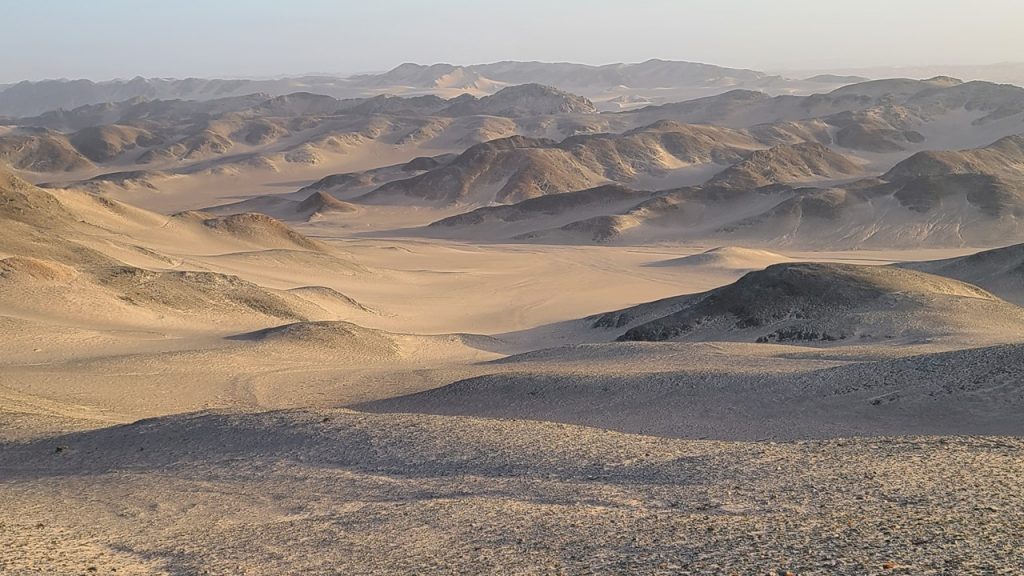
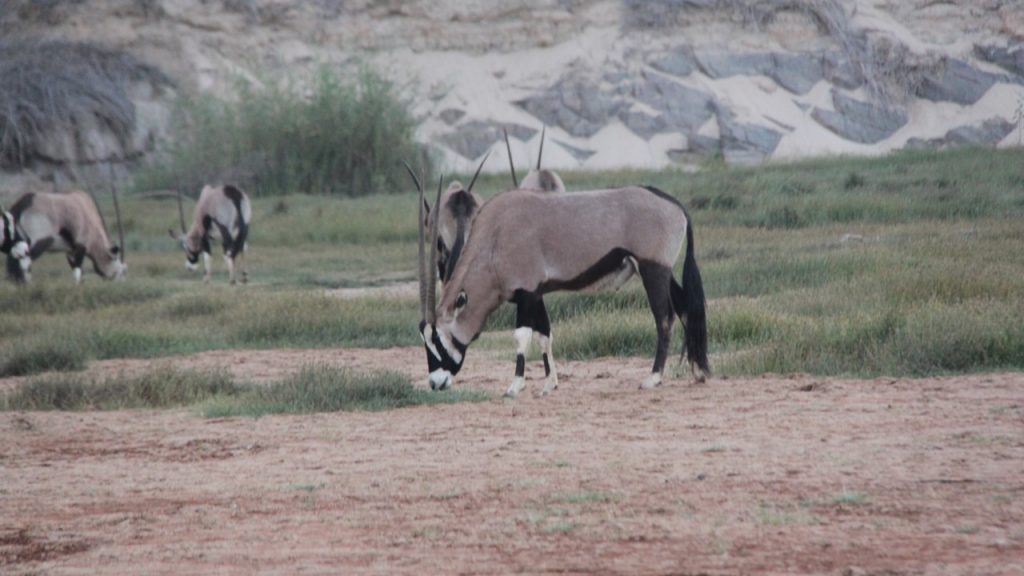
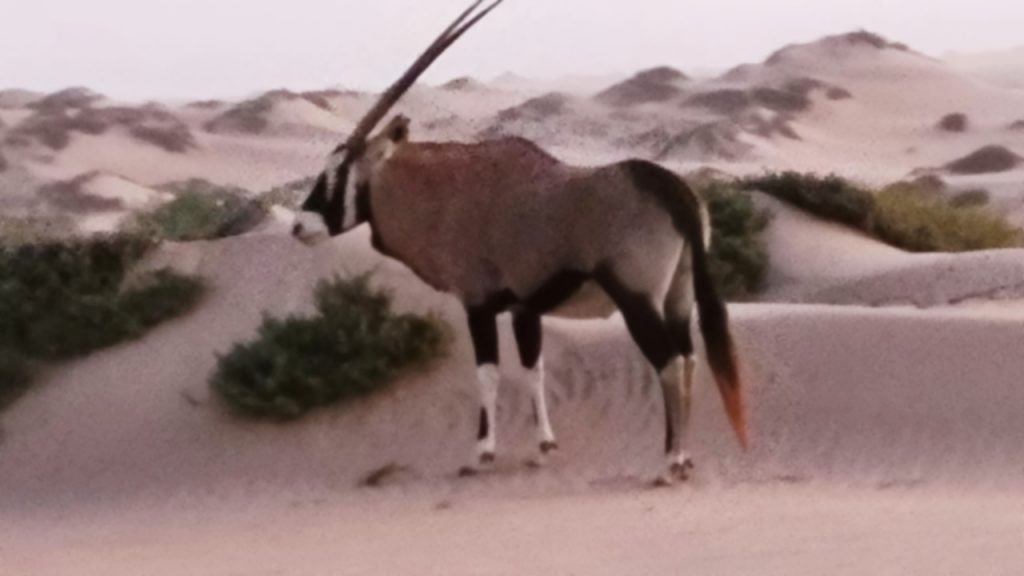
Tuesday morning we awoke to a howling sandstorm. The wind was now at 45-60 mph blowing the sands east from the dunes out towards the ocean. We fought our way from our cabin to the lodge where we had breakfast, and then were to be ferried back to our vehicle, Pauline. Unfortunately, the visibility was so low that the landmarks that the driver would have used to guide him back to our vehicle were not visible, and he got lost amongst the dunes and blowing sand. After backtracking numerous times and climbing down some impressive descents, we finally made it back to Pauline having turned a 45-minute trip into one of over 90-minutes.
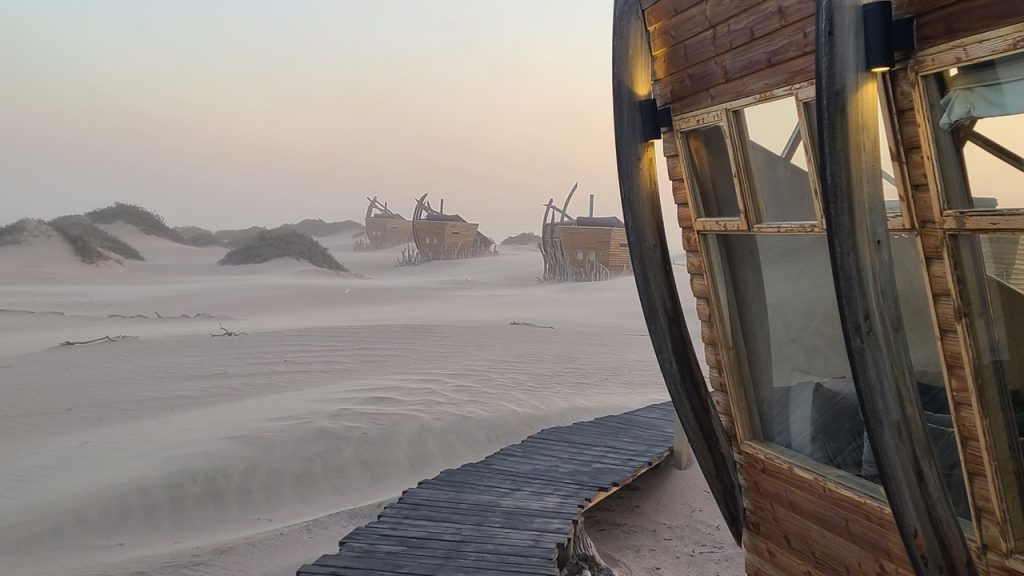
As we began our journey south down the Skeleton Coast, the winds increased and the visibility decreased. The wind pelted the left side of the truck with sand and rocks and the dust was so thick it hurt your throat. One could not see the hood of the vehicle, but, traveling at less than 10-mph with Julie looking down at the ground on the left side, and with Rocky looking down at the ground on the right side, the gravel road’s berms could barely be identified and slow progress could be made. Luckly, no other vehicles we encountered, but a breakdown could have stranded us for days. After over 3-hours of intense operating in this manner, we finally reached Terrance Bay hoping to stop for relief and diesel, but the petrol station was deserted and locked up tight. We continued our journey to the town of Torra Bay where we would find a paved road that would take us east into the sand storm. Although we now turned into the storm, we soon left the sand dunes of the west coast and the visibility improved significantly. After traveling ~30km we came to the Skeleton Coast National Park’s Springbok (East) Gate, which had been blown down and was blocking the road and our exit from the park. After showing our Park Permit papers, and complementing the Park’s Ranger, Rocky & 4 others lifted and moved the iron gate out of the way (to the cheering of other waiting vehicles). From the park, we continued east towards the Damaraland area and to our accommodation for the night at Gröotberg Lodge. Visibility had improved, but our left-side window were left pitted and barely transparent, and a smog-like haze of fine dust continued to hang over everything.
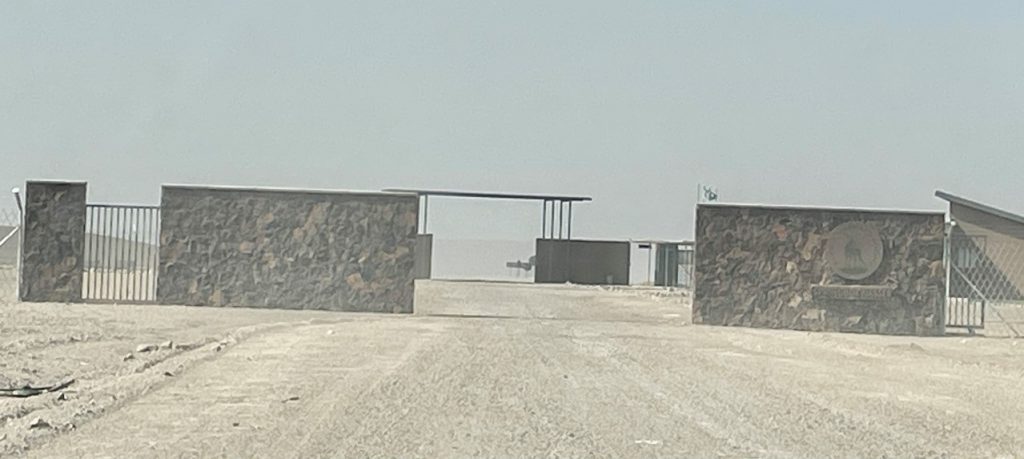
Finally in the countryside cloud, we see a giraffe, and then a 2nd one. We continued driving until, in the middle of nowhere, we spotted the sign for the lodge and started a treacherous climb up a narrow one car track that is so steep that one cannot see the road in front of the vehicle. When we finally reach the top of Gröotberg mountain, we are at a lodge built out over a steep ravine for a spectacular view of the valley below. Unfortunately, the air is so full of dust that we cannot see more than 100 feet. It has taken us 8 grueling hours to get here and the winds are still howling at hurricane force, and the temperatures are very cold – a few degrees above freezing.
